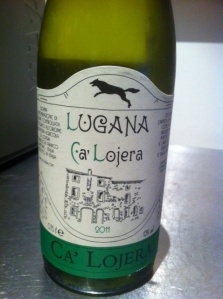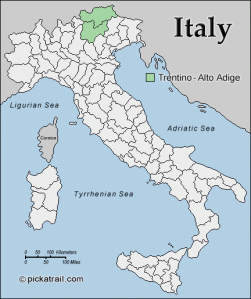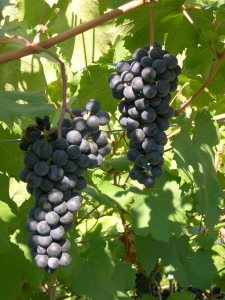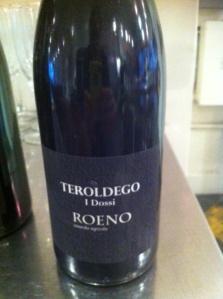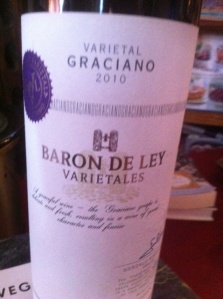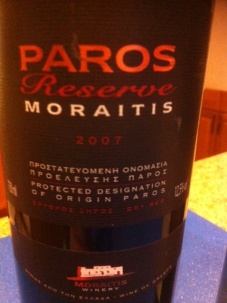With the heat wave continuing in New York, I’ve been seeking out light, refreshing, low alcohol wines to enjoy while I’m “suffering” through the summer. Of course, most people would say to avoid alcohol in its entirety during the most oppressing days of heat – but then again, what fun is that? Drinking wines from cool climate regions is typically my favorite past time anyway, and the Loire is no exception. I’ve been on a roll lately where I’ve been able to find some incredibly interesting and delicious tasting wines at my new workplace, and the other day my colleague recommended I try the Chateau de L’aulee Cremant de Loire Brut NV. This wine is made by Marielle Henrion (I have a soft spot for female wine makers) who was the winemaker at Bollinger for 15 years and also has experience working at Pommery. Chateau de L’aulee was built in 1856 by the Cordier family, and in 1973 Champagne Deutz bought the domain, rebuilt it and replanted it with the Chenin grape. Today, with 37 ha of vineyard, sparkling wine represents 80% of the production at the chateau.
Made from 100% hand harvested Chenin Blanc (traditional method is applied), the grapes are gently pressed and the wine stays on its lees for 24 months. It is then blended with older, barrel aged vintages to bring a round, complex flavor profile. The result is a beautiful sparkling wine that is both easy to drink but has multiple layers of flavors and brings this wine into a league close to Champagne, in my opinion.
Chenin Blanc, along with Riesling, is probably one of the world’s most under appreciated grapes, and like Riesling, can produce a whole variety of different styles of wines from sparkling to dry, semi sweet and dessert wines. Characteristic flavors of Chenin include apples, peach, honey, acacia, greengage and quince with great minerality and relatively low alcohol. While often referred to as Pineau de la Loire in its native region of Loire; in South Africa, it has taken off with great success (and often called “Steen”), and has nearly double the amount of vines planted than France. While I don’t think South African wines have quite the same complexity of Chenins from the Loire, they retain the same amount of great acidity which make them very pleasurable to drink.
If you are typically reaching for Prosecco or Cava when not able to afford Champagne, I highly recommend trying out a Cremant de Loire. There are also Cremant de Bourgogne, Cremant de Limoux, Cremant de Die, Cremant du Jura and Cremant d’Alsace from the other respective regions of France which are interesting and worth seeking out too.
The label “cremant” was originally applied because their lower carbon dioxide pressure made them more creamy in texture than other sparkling wines with a more fizzy mouth feel. They are thought to be the finest sparkling wines outside of the Champagne region because they apply the traditional (Champagne) method and must also be hand harvested. Cremants must be aged for a minimum of one year and there are strict laws dictating which grapes and how much of each, can be added into the wines.
Cremant de Loire was created in 1975, and the grapes that can be used are Chenin Blanc (the most common grape), Chardonnay, Grolleau (no more than 30%), Pineau d’Anis, Pinot Noir, Arbois and Cabernet Franc. There are nearly 200 producers of Cremant de Loire, the majority located around the town of Saumur, and there are some really high level wine making going on here.
This bottle is truly a great steal and high quality wine for the price – below are my tasting notes but make sure you pick up a bottle of this (or a case!) and make up your own opinion of this!
TASTING NOTES: Chateau de L’aulee Cremant de Loire Brut NV
Clear golden core with intense, medium sized bubbles. Toast, yeast, citrus and wood on the nose – definitely more going on than the average sparkling wine at this price point. Deliciously creamy on the palate, I get ripe pear, apple, peach, some pineapple and acacia flavors. The bubbles feel somewhat aggressive. Crisp refreshing acidity. Bordering on medium bodied, the alcohol is medium as well but has enough fruit to retain balance. Good length.
Conclusion: A rich, crisp and supple cremant with layers of fruit flavors and a lovely mouth feel. As the temperature of the wine lowered a bit in the glass, the flavors became more developed and almost went to a slightly oxidized state (in a good way). The wine kept changing in the glass which made this a truly fascinating and rewarding wine.
Rating: 3.5/5
Food Pairing: All types of cheeses, green salads, seafood/shellfish dishes, particularly langostines with citrus dressings.
Retail Price: $15



















